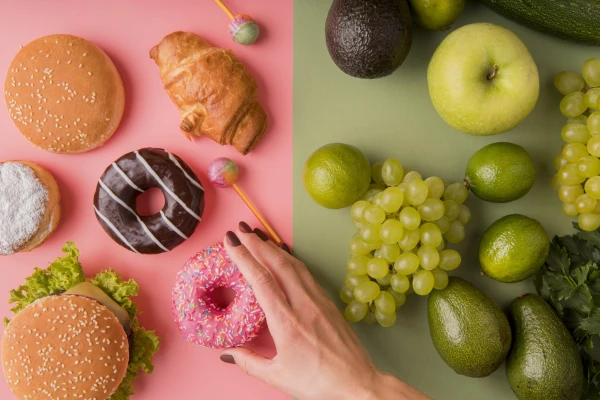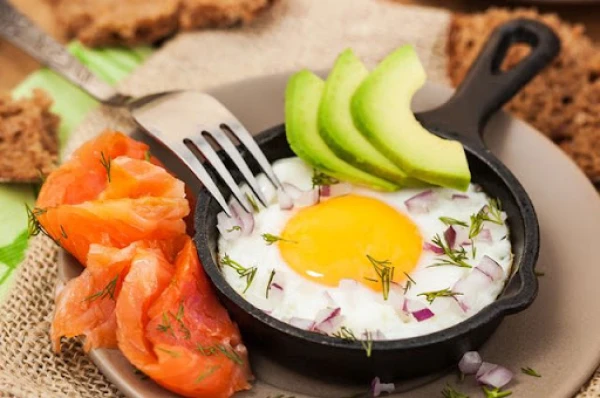
In recent years, type 2 diabetes has become one of the most common diseases, significantly influenced by unhealthy lifestyle factors – in 2024, over seven thousand new cases were registered in Latvia*. As World Diabetes Day approaches, we increasingly think about sugar – a substance that is simultaneously called a source of energy and a 'white poison.' But what is the reality – are there really 'good' and 'bad' sugars? Clinical pharmacist Ksenia Lukyanova explains.
The ABCs of Sugar
Sugar is a carbohydrate that is divided into two main types: simple or monosaccharides and double or disaccharides. Monosaccharides include glucose, fructose, and galactose, for example. They are found in fruits, vegetables, honey, and dairy products. Disaccharides, such as sucrose and maltose, are components of table sugar and are found in sweets. The body processes all sugars into glucose, which serves as an important source of energy for cells and organs: the brain, heart, muscles, and liver, which cannot function properly without this energy. Moreover, the brain relies on glucose, as it is the fastest, most efficient source of energy that supports concentration, memory, and cognitive processes.
Do 'Good' and 'Bad' Sugars Really Exist?
In reality, there is no such thing as 'good' or 'bad' sugar – chemically, they are all similar, and the body processes them the same way, explains clinical pharmacist Euroaptieka. However, a significant difference lies in how these sugars behave in the body.
The so-called 'good sugars' are those we receive daily from natural products – fruits, vegetables, dairy products, legumes, and whole grains. These are slowly digestible carbohydrates. In these products, sugar is combined with fiber, vitamins, and minerals, which help it to be absorbed more slowly and maintain stable blood sugar levels. For example, if you eat an apple, the sugar will be released into the body gradually – the glucose level will rise evenly, and the feeling of fullness will last longer.
'Bad sugars' are those that are added to products and beverages during production: white sugar, candies, sodas, white bread, and other refined or processed products. These sugars are absorbed very quickly, can cause a rapid spike in blood sugar levels, and a similarly quick drop. As a result, fatigue, cravings for something sweet, and in the long term – an increased risk of overweight and type 2 diabetes can occur. This creates so-called 'energy roller coasters,' which over time can disrupt the body's normal response to insulin.
Are Sweeteners a Better Alternative?
Sweeteners, such as saccharin, sucralose, and agave, are a safe alternative to sugar, especially for people who want to reduce their intake, control their weight, or manage their blood glucose levels, as most sweeteners contain no calories or do not cause a sharp increase in blood sugar levels. At the same time, the clinical pharmacist reminded that sweeteners should also be consumed in moderation.
Patients with diabetes or prediabetes are advised to choose substitutes with a low glycemic index, such as stevia, erythritol, or xylitol, while adhering to the recommended daily dosage. It is recommended to completely avoid refined sugar and consume natural sugar only in small amounts during fluctuations in glucose levels. However, it should be noted that excessive consumption of erythritol and xylitol can cause bloating or diarrhea, so people with sensitive gastrointestinal tracts are advised to use them with caution.
Pharmacies offer various natural sugar alternatives with less impact on blood sugar levels, available in the form of tablets, powders, or drops. A pharmacist can help you choose the most suitable option according to individual needs.
Red Flags: Signs That Blood Sugar Levels Are Out of Normal Range
Pharmacist Ksenia Lukyanova explains that fluctuations in blood sugar levels can be the first alarming signal of insulin dysfunction. A normal fasting glucose level is 3.9–5.5 mmol/L, and two hours after eating, it can rise to 7.8 mmol/L. If these figures frequently exceed normal limits, it may indicate prediabetes – a condition that is reversible with a healthy lifestyle and diet.
Without treatment, it can progress to type 2 diabetes. Although the initial stage may be asymptomatic, there are several 'red flags' to watch for: increased thirst, frequent urination (especially at night), fatigue and drowsiness, blurred vision, weight loss, slow-healing wounds on the legs and feet, dry and itchy skin, as well as frequent fungal infections. According to the recommendations of the World Health Organization, for adults, the amount of added sugar should not exceed 25 g per day, or about six teaspoons. Additionally, attention should be paid to hidden sugars, which are found in almost all products, such as ketchup, sauces, cereals, yogurt, bread, and even meat products.
How to Reduce Sugar Intake Healthily Without Losing the Sweetness of Life?
The human body cannot function without glucose, but it is important to choose 'good' sugars and reduce the intake of products with added or so-called 'bad' sugar. Clinical pharmacist Ksenia Lukyanova shares tips on how to do this healthily:
Start with small changes: it is best to reduce sugar intake gradually by changing everyday habits. Sometimes we add it out of habit – to coffee, tea, or after meals when we crave something sweet. Replace sweet drinks with water or herbal tea, desserts with fruits, and eat regularly and balanced to reduce cravings.
Evaluate product compositions: it is important to read product labels and avoid those where sugar, glucose, or syrups are listed in the first lines. Also, pay attention to carbohydrate content and how much of it is pure sugar, as products labeled 'sugar-free,' 'fat-free,' or 'dietary' can be misleading – sugar may be present in another form.
Use spices that reduce sweet cravings: natural spices such as cinnamon, vanilla, ginger, ginseng, and cloves not only reduce appetite but can also add sweetness and aroma to dishes without added sugar. Additionally, cinnamon, for example, can help stabilize glucose levels after meals.
Incorporate regular physical activity into your routine: it promotes glucose metabolism and improves circulation, as well as helps control weight.
Supplement your diet with important nutrients: a balanced diet can be complemented with dietary supplements that help maintain normal energy metabolism and body balance. Chromium helps maintain normal blood glucose levels, vitamin B6 supports normal protein and glycogen metabolism, and thiamine contributes to the normal functioning of the nervous system. Zinc helps ensure normal carbohydrate and macronutrient metabolism. It is recommended to take dietary supplements after consulting with a pharmacist or doctor, especially if there are health issues or if you are taking other medications.
*Centers for Disease Control and Prevention. (October 8, 2025). Number of newly registered diabetes patients, by sex, absolute number, and number per 100,000 residents.













Leave a comment